Mary Swanzy HRHA (1882-1978) The Storm Oil on canvas, 63 x 76cm (24¾ x 30'') Signed Provenance: From the estate of P.J. Mara; originally in the collection of Pat and Antoinette Murphy and sold by them at their inaugural exhibition at the Peppercanister Gallery in October 1999. The artist told Pat Murphy that the two figures in the maze represented the artist and her sister. Exhibited: 'Analysing Cubism Exhibition', IMMA Feb/May 2013, The Crawford Gallery,Cork June/Sept 2013, The FE McWilliam Gallery, Banbridge, Sept/Nov 2013; Opening Exhibition of Irish Art The Peppercnnister Gallery October/November 1999 Cat. No. 1 where purchased. (Illustrated front cover of the catalogue). Literature: 'Analysing Cubism', The Crawford Gallery, Full page illustration p.96. Julian Campbell has linked the large constructions in The Storm including to that of Semur-en-Auxois, a town in Burgundy. This is, according to Campbell, the equivalent to Pablo Picassos Horta de Ebro, the Spanish mountain top town that inspired several of his key cubist landscape paintings. Semur is a medieval city built on an outcrop of pink granite and famous for its ramparts and towers. It is dominated by an imposing fortress, whose features can be detected in The Storm. The centre of the painting is made of a series of vortexes made of geometric configurations of light. These swirling forms swirl over the battlemented city flattening and fragmenting its solidity into facets of radiance and colour. These create a sense of speed and movement akin to the experimental style of the Italian Futurists, whose work Swanzy would have seen in Florence where she lived briefly before the World War One. The centre of the city struck by stylized rods of lightning which can be seen darting across the surrounding hills. This dramatic vision of a storm is presented as seen from above as though from an airplane or some celestial vantage point. Fascination with force and speed and the aeronautical perspective became fashionable amongst avant-garde artists in the 1910s and 1920s through the influence of futurism and Orphic Cubism, the colourful style associated with the work of Robert Delaunay and Sonya Terk. Their work was shown at the Salon des Independants in Paris before the war at a time when Swanzy also participated in the exhibitions. Many of Swanzys cubist inspired works of the late 1920s and 1930s reveal her keen understanding of this aesthetic which sought to transmit the energy and sensation of living and seeing in the modern age in images of flight and of the city. In this work Swanzy replaces the ubiquitous symbol of the Eiffel Tower, preferred by Delaunay, with the medieval town. A Storm also takes a slightly different perspective to that of Orphic Cubism in its inclusion of tiny figures. Two can be seen in the bottom centre of the composition, struggling to keep their balance on the rampart walkway. These signal the future direction of Swanzys work which be the 1940s was moving away from Cubism towards more imaginary themes. As early as 1934, roughly around the time this work was painted, a review of an exhibition of her work in London, described Swanzy as a Surrealist working in a Cubist convention. In The Storm the Surrealist aspect is most notable in the large arrow that lies embedded in the centre of the cylindrical forms of the city. This play on proportion and scale adds a dimension of mystery to the painting suggesting the destruction of the citadel and the terror of its citizens. Dr Róisín Kennedy
Mary Swanzy HRHA (1882-1978) The Storm Oil on canvas, 63 x 76cm (24¾ x 30'') Signed Provenance: From the estate of P.J. Mara; originally in the collection of Pat and Antoinette Murphy and sold by them at their inaugural exhibition at the Peppercanister Gallery in October 1999. The artist told Pat Murphy that the two figures in the maze represented the artist and her sister. Exhibited: 'Analysing Cubism Exhibition', IMMA Feb/May 2013, The Crawford Gallery,Cork June/Sept 2013, The FE McWilliam Gallery, Banbridge, Sept/Nov 2013; Opening Exhibition of Irish Art The Peppercnnister Gallery October/November 1999 Cat. No. 1 where purchased. (Illustrated front cover of the catalogue). Literature: 'Analysing Cubism', The Crawford Gallery, Full page illustration p.96. Julian Campbell has linked the large constructions in The Storm including to that of Semur-en-Auxois, a town in Burgundy. This is, according to Campbell, the equivalent to Pablo Picassos Horta de Ebro, the Spanish mountain top town that inspired several of his key cubist landscape paintings. Semur is a medieval city built on an outcrop of pink granite and famous for its ramparts and towers. It is dominated by an imposing fortress, whose features can be detected in The Storm. The centre of the painting is made of a series of vortexes made of geometric configurations of light. These swirling forms swirl over the battlemented city flattening and fragmenting its solidity into facets of radiance and colour. These create a sense of speed and movement akin to the experimental style of the Italian Futurists, whose work Swanzy would have seen in Florence where she lived briefly before the World War One. The centre of the city struck by stylized rods of lightning which can be seen darting across the surrounding hills. This dramatic vision of a storm is presented as seen from above as though from an airplane or some celestial vantage point. Fascination with force and speed and the aeronautical perspective became fashionable amongst avant-garde artists in the 1910s and 1920s through the influence of futurism and Orphic Cubism, the colourful style associated with the work of Robert Delaunay and Sonya Terk. Their work was shown at the Salon des Independants in Paris before the war at a time when Swanzy also participated in the exhibitions. Many of Swanzys cubist inspired works of the late 1920s and 1930s reveal her keen understanding of this aesthetic which sought to transmit the energy and sensation of living and seeing in the modern age in images of flight and of the city. In this work Swanzy replaces the ubiquitous symbol of the Eiffel Tower, preferred by Delaunay, with the medieval town. A Storm also takes a slightly different perspective to that of Orphic Cubism in its inclusion of tiny figures. Two can be seen in the bottom centre of the composition, struggling to keep their balance on the rampart walkway. These signal the future direction of Swanzys work which be the 1940s was moving away from Cubism towards more imaginary themes. As early as 1934, roughly around the time this work was painted, a review of an exhibition of her work in London, described Swanzy as a Surrealist working in a Cubist convention. In The Storm the Surrealist aspect is most notable in the large arrow that lies embedded in the centre of the cylindrical forms of the city. This play on proportion and scale adds a dimension of mystery to the painting suggesting the destruction of the citadel and the terror of its citizens. Dr Róisín Kennedy
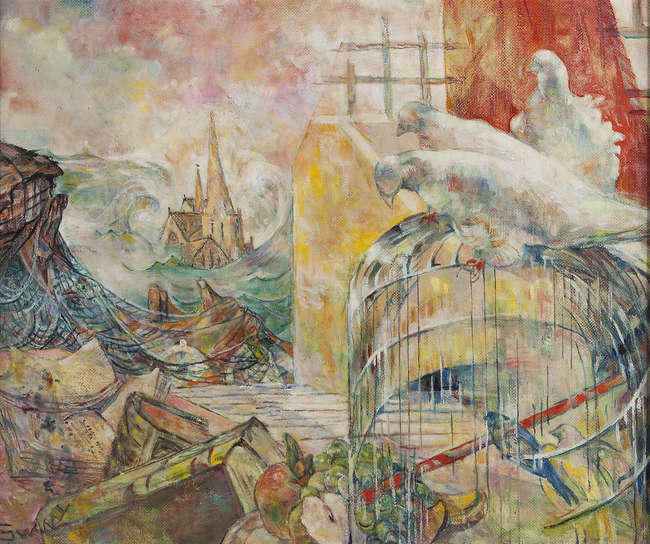

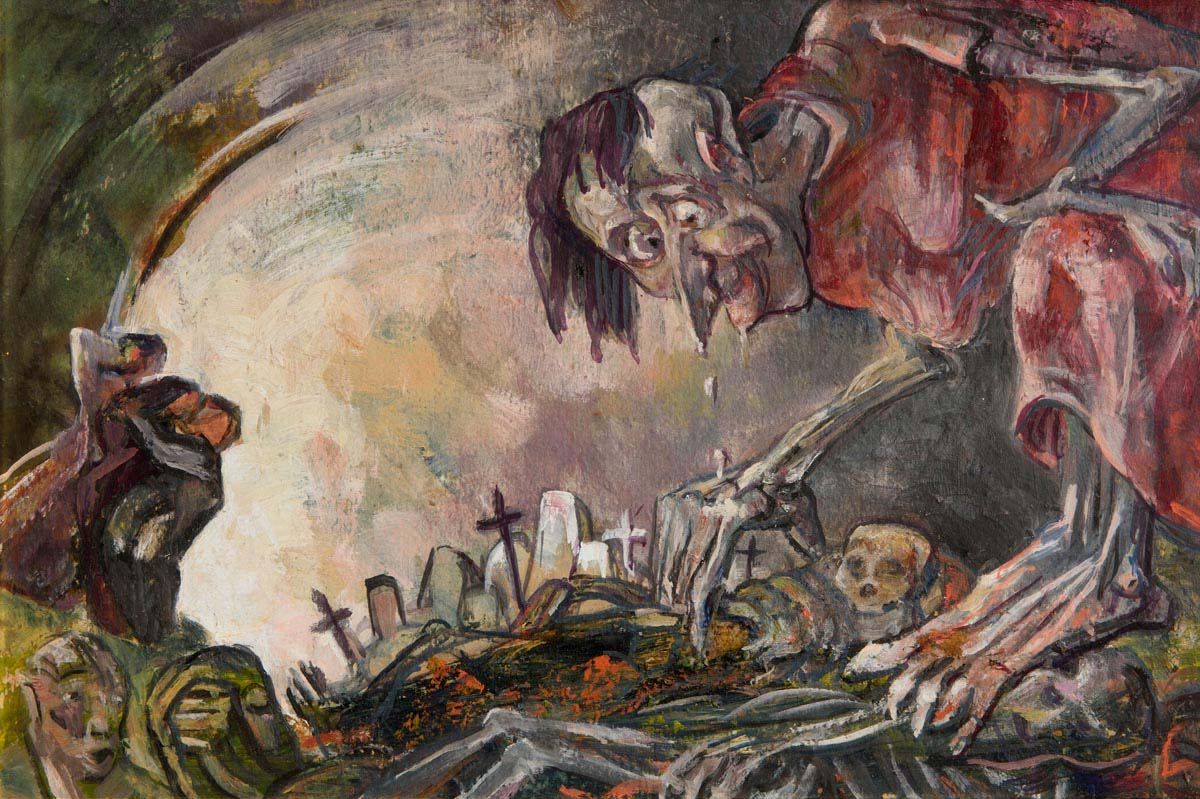
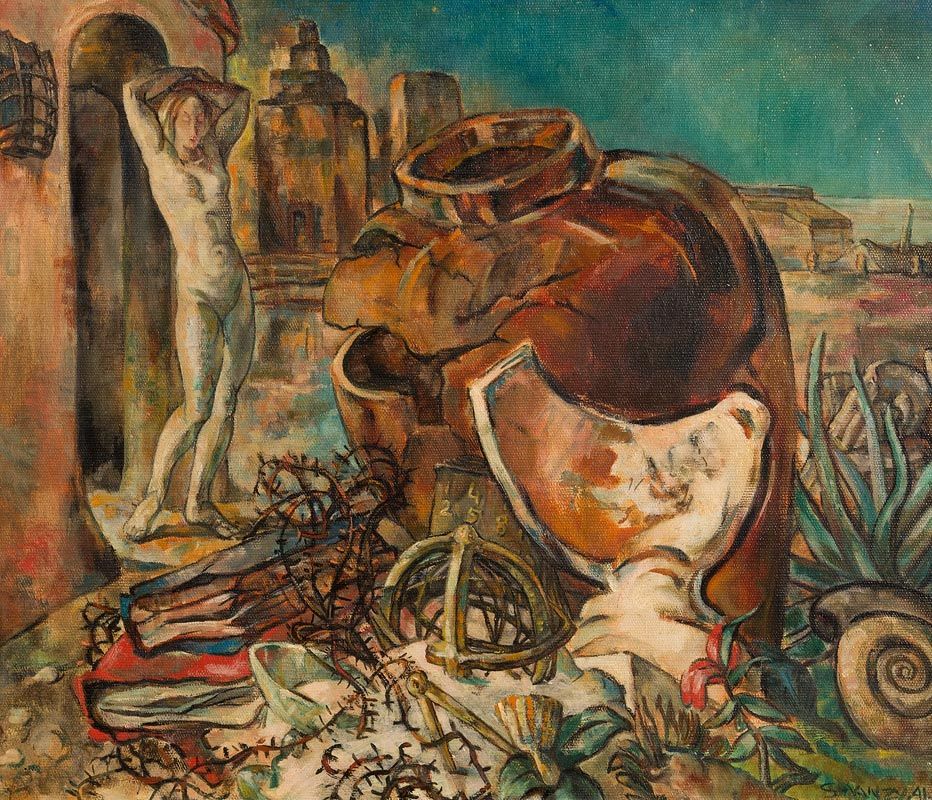



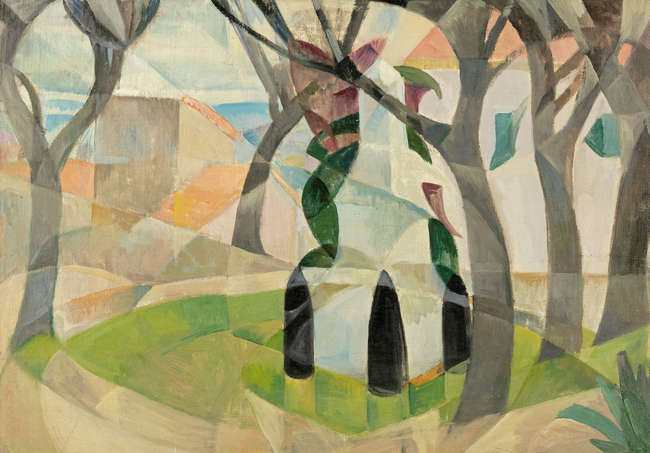
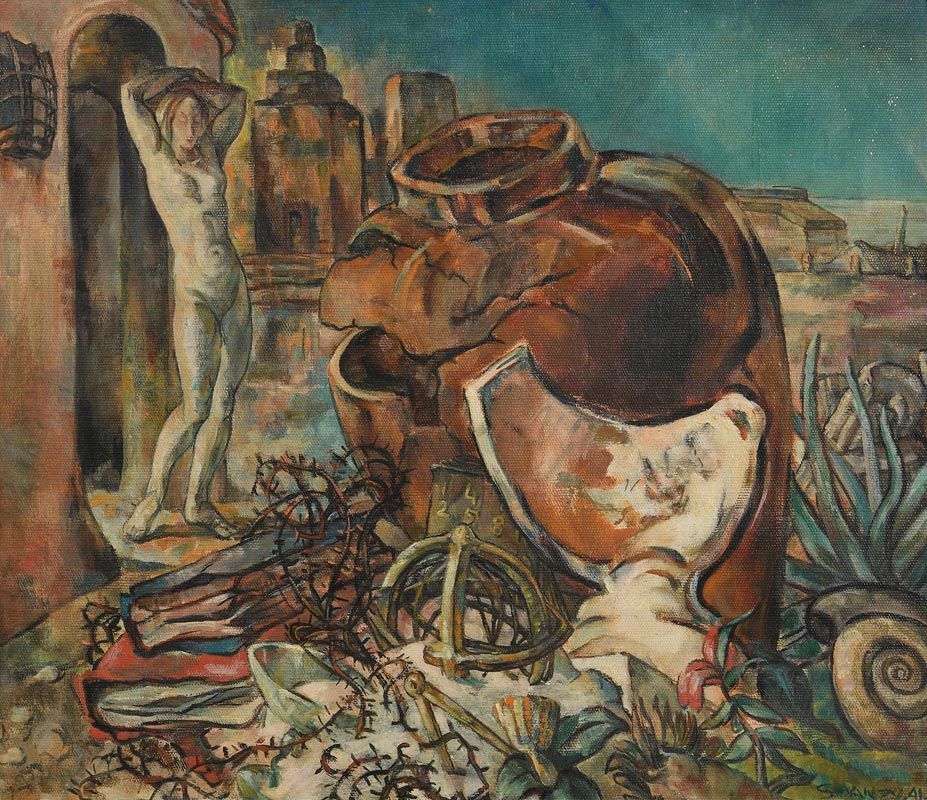


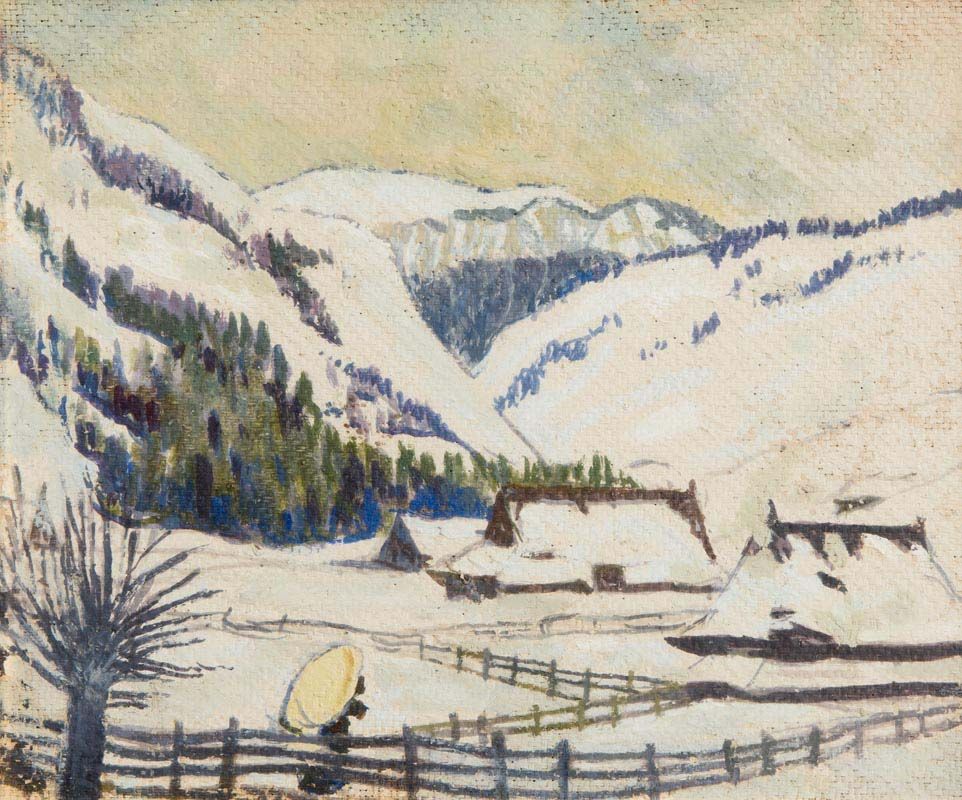
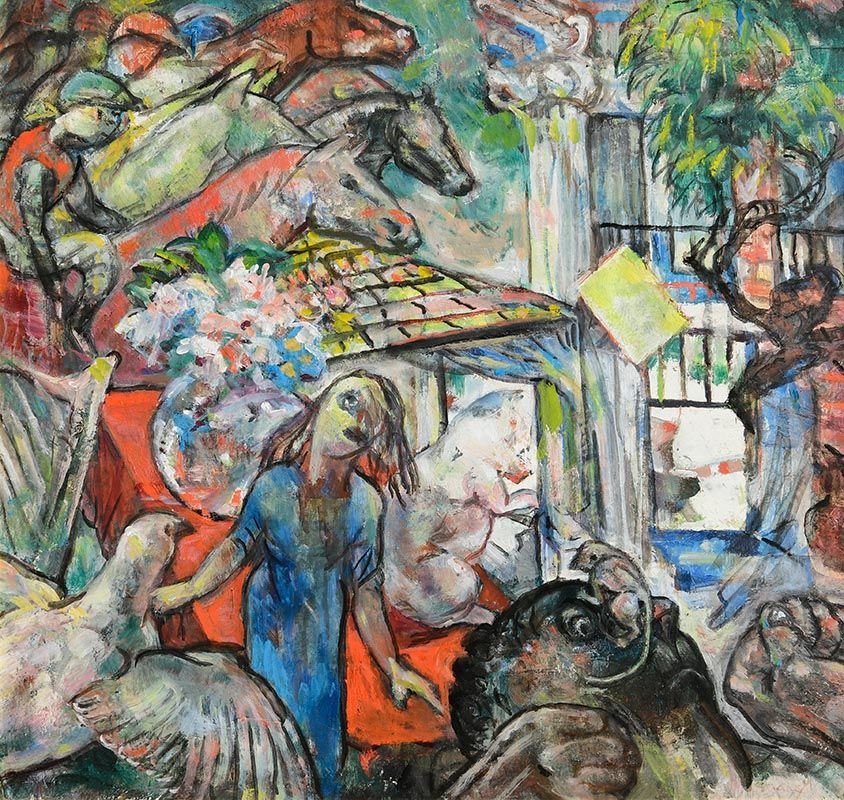


Testen Sie LotSearch und seine Premium-Features 7 Tage - ohne Kosten!
Lassen Sie sich automatisch über neue Objekte in kommenden Auktionen benachrichtigen.
Suchauftrag anlegen